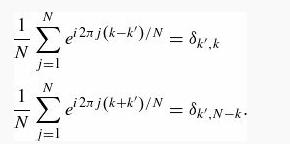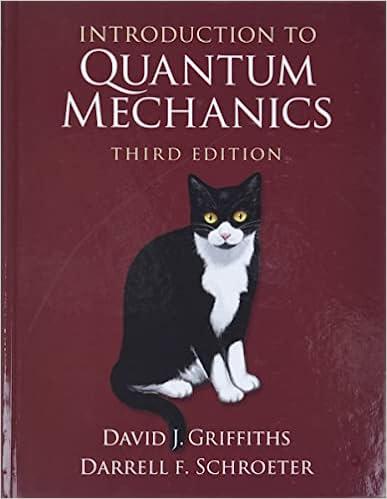The harmonic chain consists of N equal masses arranged along a line and connected to their neighbors
Question:
The harmonic chain consists of N equal masses arranged along a line and connected to their neighbors by identical springs:

where xj is the displacement of the jth mass from its equilibrium position. This system (and its extension to two or three dimensions—the harmonic crystal) can be used to model the vibrations of a solid. For simplicity we will use periodic boundary conditions: xN+1 = x1, and introduce the ladder operators

where k = 1, ......, N -1 and the frequencies are given by

(a) Prove that, for integers k and k' between 1 and N-1,

(b) Derive the commutation relations for the ladder operators:
![]()
(c) Using Equation 5.75, show that

where R = Σj xj/N is the center of mass coordinate.
(d) Finally, show that

Comment: Written in this form above, the Hamiltonian describes N-1 independent oscillators with frequencies ωk (as well as a center of mass that moves as a free particle of mass Nm). We can immediately write down the allowed energies:

where ћK is the momentum of the center of mass and nk = 0,1, ... is the energy level of the kth mode of vibration. It is conventional to call the number of phonons in the kth mode. Phonons are the quanta of sound (atomic vibrations), just as photons are the quanta of light. The ladder operators ak+ and ak- are called phonon creation and annihilation operators since they increase or decrease the number of phonons in the kth mode.
Step by Step Answer:

Introduction To Quantum Mechanics
ISBN: 9781107189638
3rd Edition
Authors: David J. Griffiths, Darrell F. Schroeter





